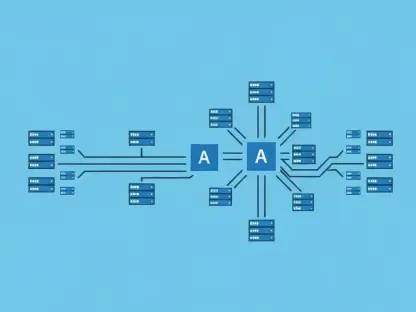What happens when a single overlooked flaw in a container image exposes an entire enterprise to cybercriminals? In today’s cloud-native landscape, containers drive innovation across industries, powering everything from e-commerce platforms to critical healthcare systems. Yet, a staggering 90% of container images harbor known vulnerabilities, according to recent industry scans. This alarming statistic underscores a harsh reality: as containers proliferate, so do the risks of breaches that can cripple operations overnight. The stakes have never been higher, and understanding how to secure these building blocks of modern tech is no longer a luxury—it’s a necessity.
The significance of container security cannot be overstated in an era where digital transformation accelerates at breakneck speed. With organizations deploying thousands of containers daily, each one represents a potential entry point for attackers if not properly safeguarded. Breaches stemming from insecure images or runtime exploits have already cost companies millions in damages and lost trust. This narrative dives deep into the layers of container protection, uncovering real-world challenges and proven strategies to fortify environments against evolving threats. From building secure foundations to monitoring active systems, the journey to robust security demands attention at every step.
Why Container Security Demands Attention
Containers have become the backbone of agile development, enabling rapid deployment and scalability across cloud environments. However, their portability and lightweight nature also make them attractive targets for malicious actors. A single compromised container can serve as a gateway to broader network infiltration, as seen in high-profile incidents where attackers exploited unpatched vulnerabilities to gain unauthorized access. The urgency to prioritize security is clear—neglecting it risks not just data loss but also reputational harm that can take years to repair.
Beyond the immediate impact of breaches, the regulatory landscape adds another layer of complexity. Compliance with standards like GDPR or HIPAA often hinges on demonstrating robust security practices, including how containers handle sensitive data. Failing to meet these requirements can result in hefty fines and legal repercussions. Thus, securing containers isn’t merely a technical challenge; it’s a business imperative that affects the bottom line and long-term viability in a competitive market.
The Growing Threat Landscape Around Containers
As adoption of containers surges, so does the sophistication of attacks targeting them. Cybercriminals have shifted focus toward supply chain compromises, injecting malicious code into seemingly legitimate images before they even reach production. This trend mirrors broader cloud adoption patterns, where the shared responsibility model leaves gaps that attackers eagerly exploit. The result is a threat environment where traditional defenses fall short against container-specific risks like privilege escalation or lateral movement within clusters.
Statistics paint a grim picture: a recent report found that over 60% of organizations experienced container-related security incidents in the past year alone. Unlike legacy systems, containers operate in dynamic, ephemeral environments, making static security measures obsolete. This disparity highlights a critical need for tailored approaches that address the unique lifecycle of containers, from creation to deployment, ensuring no blind spots remain for adversaries to leverage.
Laying the Groundwork: Essential Layers of Protection
Securing containers requires a multifaceted strategy that spans their entire lifecycle. Starting with minimal and hardened images, such as Alpine or Distroless, reduces the attack surface by stripping away unnecessary components. Docker Hardened Images take this further, offering near-zero CVE counts and built-in Software Bill of Materials (SBOMs) for transparency. This foundation minimizes vulnerabilities from the outset, setting a secure baseline for any deployment.
Supply chain integrity forms the next critical layer, preventing disasters akin to the infamous SolarWinds breach. Tools like Docker Scout and Trivy enable thorough vulnerability scanning and SBOM validation, ensuring only trusted images enter the pipeline. Additionally, enforcing least privilege principles—through rootless configurations and read-only file systems—limits damage if a breach occurs. Protecting sensitive data with encryption and secure storage, such as Kubernetes Secrets, alongside runtime monitoring with solutions like Falco, rounds out this comprehensive defense. Automating these practices through CI/CD integrations further reduces human error, embedding security into every process step.
Expert Perspectives: Challenges and Triumphs in the Field
Insights from cybersecurity leaders reveal the daunting scale of container security challenges. A prominent industry analyst recently noted, “Containers are a double-edged sword—revolutionary for speed, but a nightmare for security without layered defenses.” This sentiment is echoed by DevOps teams who’ve faced real-world threats, such as a mid-sized tech firm that narrowly avoided a ransomware attack by detecting suspicious runtime behavior with Falco. Their experience underscores the value of real-time visibility in averting catastrophe.
Research adds weight to these anecdotes, with studies showing that nearly 75% of container images in public registries contain exploitable flaws. Such data drives home the urgency of adopting robust tools and practices. A security engineer from a Fortune 500 company shared how automating scans with Docker Scout caught a critical vulnerability before deployment, saving countless hours of damage control. These voices collectively affirm that proactive measures and modern solutions are indispensable in today’s threat landscape.
Practical Steps to Fortify Container Environments
Implementing effective container security starts with actionable, targeted strategies that any organization can adopt. Begin by selecting minimal, hardened base images and updating them regularly to patch known issues—Docker Hardened Images offer a reliable starting point for enterprise needs. Next, validate supply chains using tools like Trivy to scan for vulnerabilities and generate SBOMs, ensuring every component is trustworthy before it reaches production.
Further steps include enforcing least privilege with specific configurations, such as USER directives in Dockerfiles and runAsNonRoot policies in Kubernetes, alongside securing data with cloud key vaults and image encryption via Cosign. Runtime monitoring should not be overlooked—deploying Falco to detect anomalies like unauthorized network activity provides critical real-time alerts. Finally, automating security policies within CI/CD pipelines ensures consistent compliance, minimizing manual oversights and bolstering overall protection with minimal effort.
Reflecting on the Path Forward
Looking back, the exploration of container security revealed a complex yet navigable challenge that demanded vigilance at every turn. The stories of near-misses and successful interventions highlighted the tangible impact of robust defenses. Each layer, from hardened images to runtime alerts, played a pivotal role in shielding systems from relentless cyber threats.
Moving ahead, organizations must commit to integrating these strategies as core components of their operational frameworks. Staying updated with emerging tools and evolving attack patterns will be crucial to maintaining resilience. Collaboration across development and security teams can further strengthen efforts, ensuring that container environments remain a source of innovation rather than vulnerability. The journey to secure containers continues, but with these actionable steps, the path to a safer digital frontier becomes clearer.









